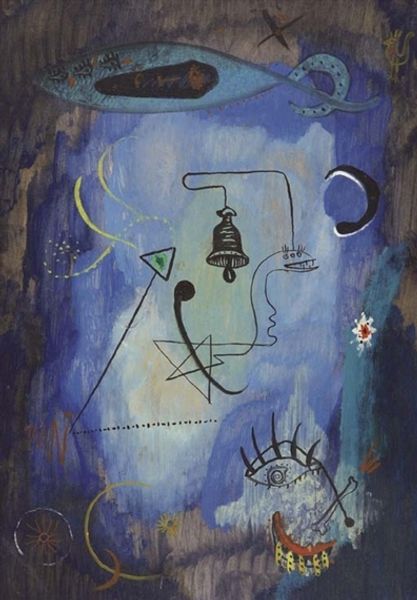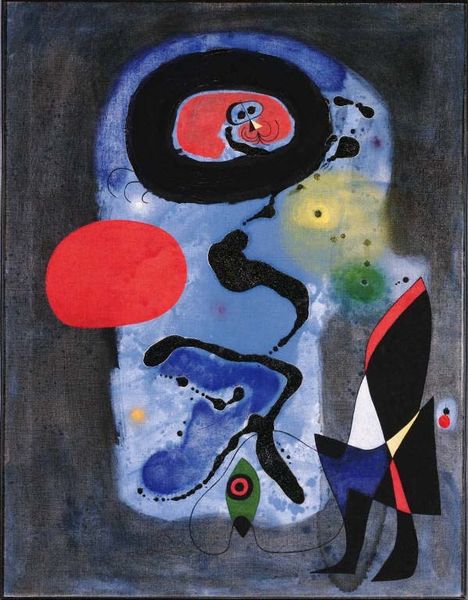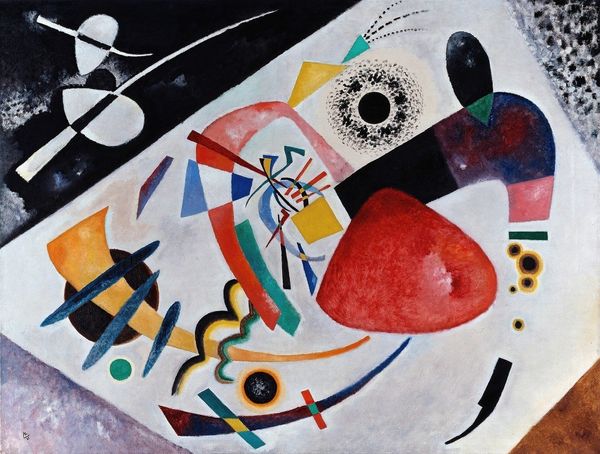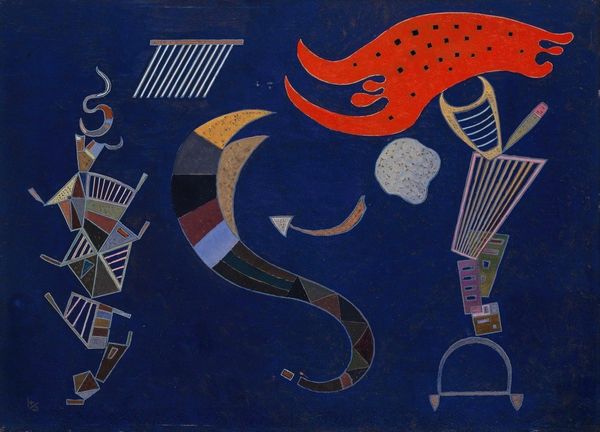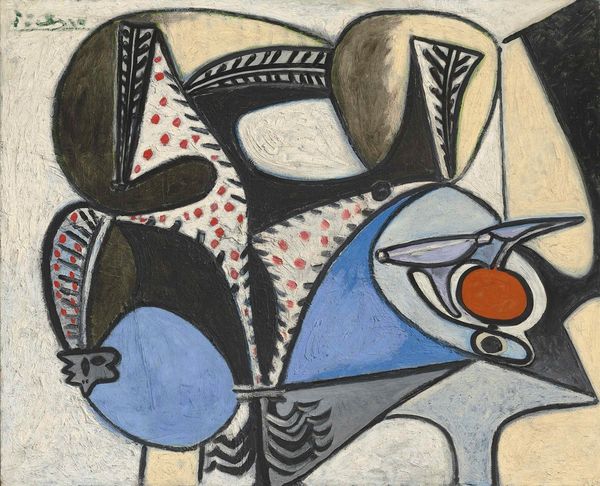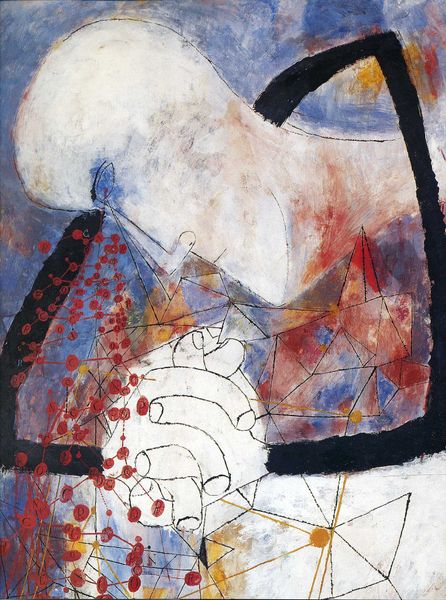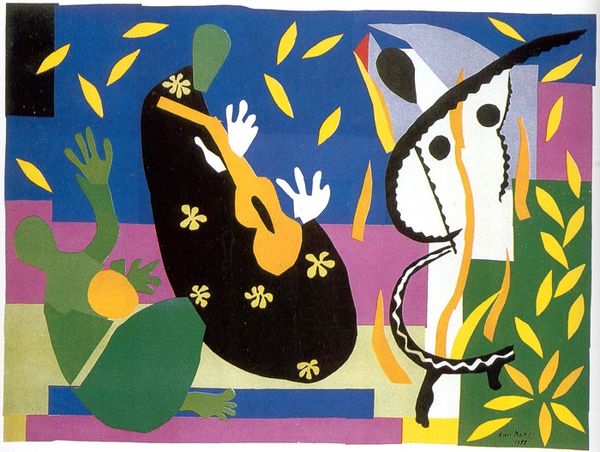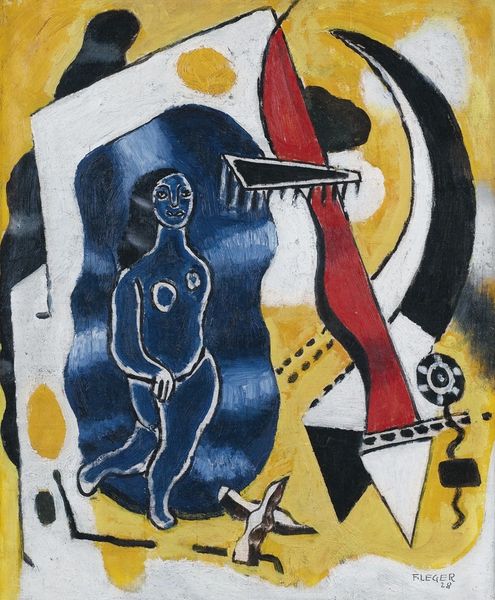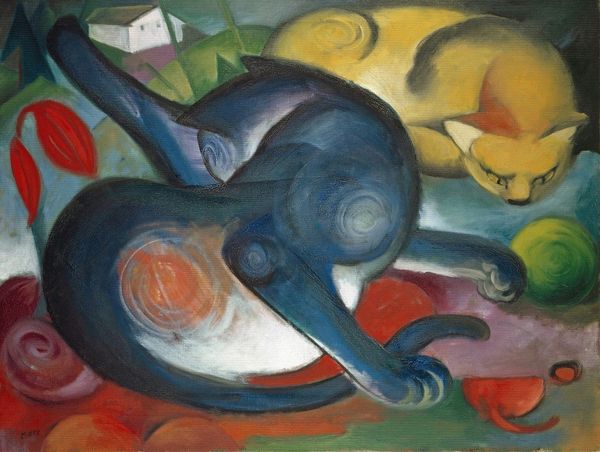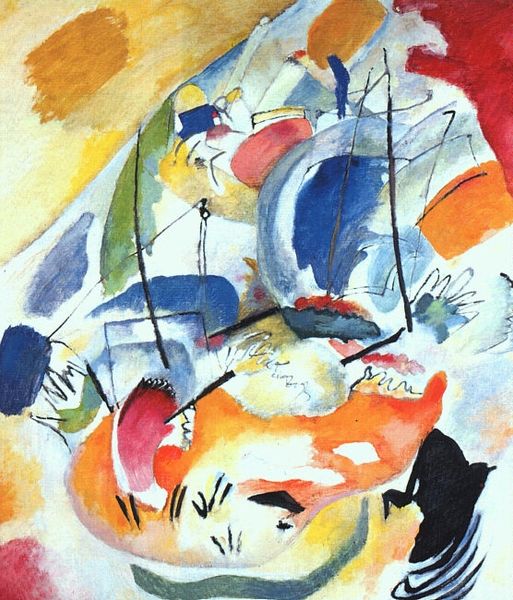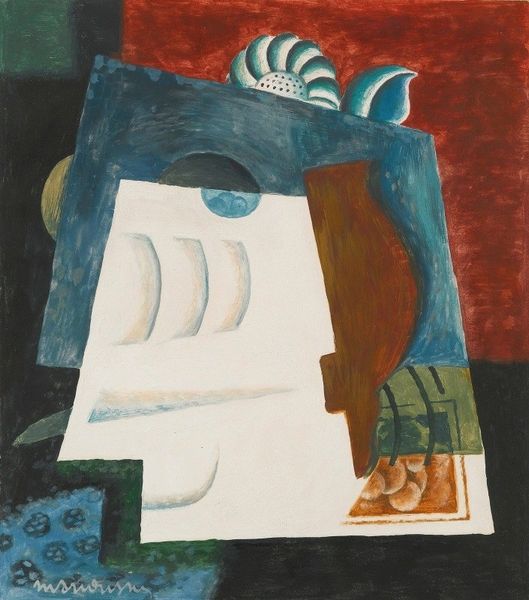
painting, watercolor
#
portrait
#
painting
#
figuration
#
watercolor
#
intimism
#
geometric
#
naïve-art
#
naive art
#
abstraction
#
modernism
#
watercolor
Copyright: Stanley Pinker,Fair Use
Editor: Here we have Stanley Pinker's "People and Things," likely a watercolor painting from 1974. It's such a striking composition, with these somewhat haunting, mask-like figures floating amidst geometric shapes. What do you see in this piece from a materialist perspective? Curator: This work strikes me as a fascinating commentary on the constructed nature of identity through the lens of its material conditions. Pinker uses watercolor, a traditionally 'minor' medium often associated with leisure and amateurism, to depict these figures and objects. This challenges the hierarchy that positions oil painting as a more serious, and therefore 'better' medium for representing important subjects like people. Editor: So the choice of materials is significant in itself? Curator: Absolutely. Consider also the “things” in the painting: industrial shapes and everyday objects are rendered with the same care as the figures. This flattens the hierarchy between 'high' art subjects—people—and mundane manufactured items, raising questions about how the act of production and consumption shapes our understanding of both. What relationship can you find between the shapes in the bottom side of the image and the two human portraits on the upper part? Editor: That's a clever parallel. The human figures almost look like manufactured items themselves, with their simplified forms. The fact that it's also a watercolour makes them look flimsy in contrast with how sturdy humans should be portrayed! Curator: Precisely! Furthermore, the naive-art style contributes to the deconstruction of established artistic conventions. What statement could Pinker be making by choosing this style? Editor: Maybe he is suggesting that anyone could pick up these means of production of “art”. Thank you, looking at it this way has made me understand the image as a wider commentary about access and commodification! Curator: It also encourages us to reflect on how our identities and relationships are mediated by the objects we create and consume. A painting might be able to go far in what it implies, no?
Comments
No comments
Be the first to comment and join the conversation on the ultimate creative platform.
